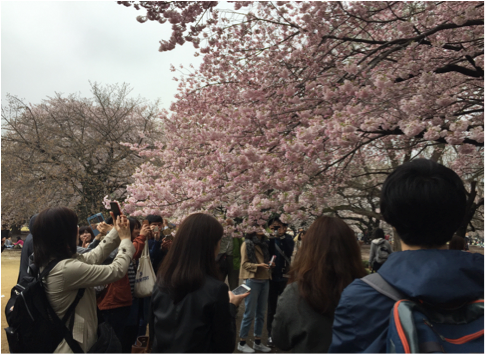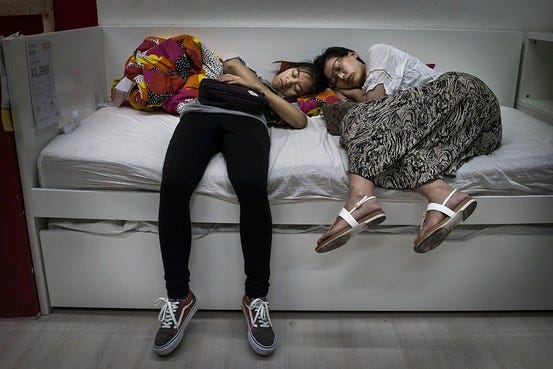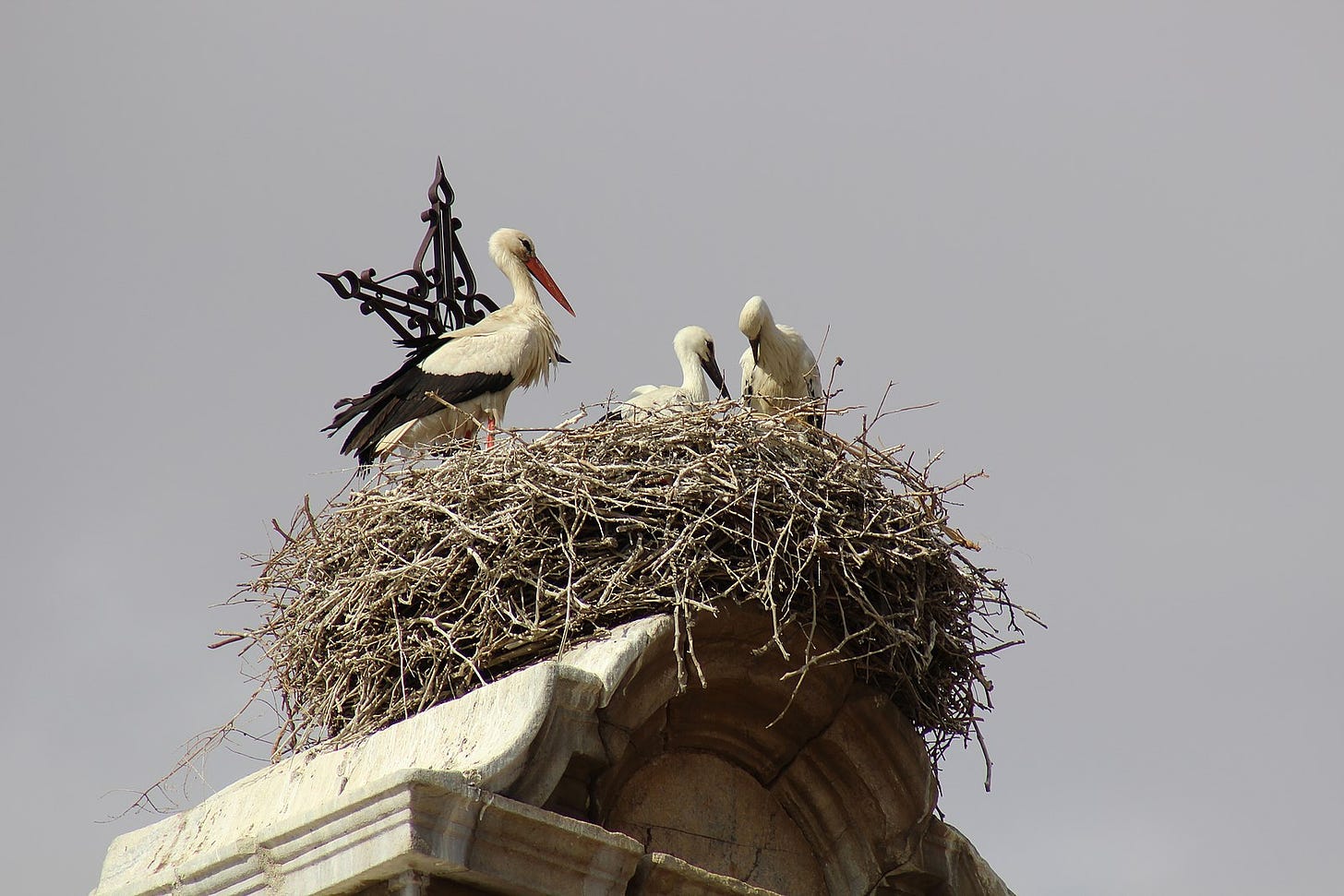An occupational hazard of a nomadic life is being asked what it is that I like best about the different countries I’ve lived in. It’s a bit like someone demanding to know your favourite colour or favourite book. There is no such thing. Like most people, I enjoy several colours and books. But sometimes, being forced to make even an unfair choice can help to clarify. I tend to gravitate towards nuance, ‘albeits’ and ‘howevers’. I fear broad-brush assertions for their partial truths. But, I have also come to realize that if understood as subjective reactions with a splash of silliness and a dash of epiphany, there is some value in attempting answers to impossible questions in the “best thing”- vein. So here goes:
Indonesia
Winner: A vista in central Jakarta
The best thing about Indonesia, for me, is a spot near the centre of Jakarta, where the country’s fantastical diversity comes to architectural life. This is the spot where to your left you see an enormous statue of the Hindu god, Krishna, leading the Pandava prince, Arjuna, into battle, while in front of you, Monas, the country’s main, obelisk-shaped, nationalist monument rears up into the sky. To the right, you see the marble minaret of Jakarta’s largest mosque, the Istiqlal, and if you are blessed with good eyesight you might just make out the cast iron steeples of the city’s Catholic cathedral next to it. Out of sight, behind you will be the hulk of another kind of cathedral, one dedicated to shopping: the sprawling Grand Indonesia mall.
Hindu, Muslim, Christian, Nationalist and Capitalist meld in this vista to give the country’s Sanskrit-tinged motto, “Bhinekka Tinggal Ika” (Multiple but One) corporeal form.
Runners Up: Names
The nomenclatural equivalent of the architectural diversity described above is equally wondrous. Names in Indonesia can be long or short, but more often than not, they are startling. Indonesian appellations varyingly derive from Sanskrit, Arabic, multiple local and European languages, as well as the fertile imagination of parents.
One of the country’s top defense lawyers, for example, is called (I kid you not) Hotman Paris Hutapea. Indonesian names mix cultures, religions, languages and imagery in unexpected, but wonderful, ways. An especially common juxtaposition is between overtly Muslim names and traditional Sanskrit-based, “Hindu” ones. Mohammad Gunawan, for instance, is amongst the most famous writers in the country. The former religious affairs minister, a hardliner, was called Suryadharma Ali. Scanning the newspapers reveals a smorgasbord of monikers like, Teddy Anwar, Muhammad Krisna, and Batman Bin Supraman. Once I read an article about someone called “Andi Go To School.” Goto (as Andi Go To School went by) was a policeman from Central Java, whose father, also blessed with an unusual appellation - Bullking, named his son thusly in the hope that it would make Andi love going to school.
https://www.thejakartapost.com/life/2017/06/24/9-unusual-indonesian-names.html
Japan
Winner: Toilets
That toilets in Japan are veritable objets d’art is a well-established fact. They clean (and warm) the posterior (and anterior). They oscillate, beep and play music. Some glow in the dark. Others can measure a user’s blood sugar levels. In fact a Japanese toilet can arguably perform complex tasks more efficiently than most governments. But, for me, their true awesomeness is not their gadgetry, so much as their cleanliness and easy availability. For a woman on the move, a decent toilet is gold. We have smaller bladders than men, we have monthly periods and those of us who have given birth have urinary tracts that are as capricious in the timing of their needs as the annual blooming of the cherry blossoms. The simple fact of being able to use a toilet with confidence in public spaces- parks, metro stations, highway pit stops – enhances the quality of life enough to make toilets my pick from Japan.
Runners up: Ogling flowers
The Japanese attentiveness to nature is inspiring. When spring arrives in its blossom-soaked glory, the streets of Tokyo are crowded with flower-oglers photographing pansies and irises, as carefully as if they were rare treasures. Certain cherry blossom trees attract the kind of crowds that are the preserve of actors and football players in other countries. Everyone can name the flowers as they bloom in succession: first the plum blossoms and then the cherry trees, followed by the azaleas, rhododendron and wisteria. Everyday conversations are peppered with blossom talk, which builds complicity even amongst strangers. “Did you see the cherry blossoms lit up along the Meguro River yet?” “The wisterias are late this year.” Etc.
Photo: A scrum of blossom oglers taking photos of a cherry tree in Yoyogi Park
China:
Winner: Water calligraphy
Beijing’s public parks are hives of activity. There are the tree shouters: would-be-English speakers who are too embarrassed to practice their nascent linguistic skills with real people and prefer to use arboreal substitutes. There are the backward-walkers: exercisers who hold that this activity keeps the brain young. There are groups of parents bearing placards with the vital stats – height, sex, income- of their offspring in the hope of finding them a suitable match. There are tango dancers and tai chi practitioners.
But my favorite are the water calligraphers who dip long, home-made, brushes into pails of water to balletically paint Chinese characters on the tiled pathways of parks. The calligraphy lasts but momentarily, disappearing into the ground as the water evaporates. It's a submission to ephemerality; a focus on finding meaning in the beauty of the fleeting present.
Runners up: Weekend at IKEA
Shopping at an Ikea in Sweden may be the height of banality, but not in Beijing. When I lived there entire families would make the pilgrimage to the store on weekends. People tested the beds on sale by actually taking naps on them. Grannies in Chairman Mao hairstyles chowed down on Swedish meatballs with chopsticks, while a band played at the restaurant. It was the hippest place to be.
Photo credit: The Wall Street Journal (https://www.wsj.com/articles/BL-CJB-26475)
Spain
Winner: Storks on Churches
The skies in Spain are often dramatic, like its people. The colours are deep and the horizon can feel endless. But ever so often they are punctuated by a steeple – a church spire, a miraculously intact Roman column, an industrial chimney, an electric pole – atop of which an unruly mess of grass and sticks houses baby storks. The birds fly in with muscular grace from Northern Africa every summer and in their migratory nature, I sense a kindred spirit, one that wishes to soar above borders and make its home in different places that are all equally its own. There is something about the sight of a stork swooping down to rest atop the bell tower of a baroque cathedral that calls out to the soul of every nomad.
Photo credit: Wikimedia commons
Runner up: Café con leche
My decades-long quest for the perfect cup of coffee met its completion in Spain (cue: protests from the entire nation of Italy). Having suffered sugar masquerading as coffee in Indonesia, milk as coffee in India, fancy-pantsy Japanese concoctions and flavoured water in the U.S., the U2 track “I still haven’t found what I’m looking for” had been the aural backdrop to much of my caffeine-seeking life. Then came the day I sat down in a café in Madrid’s Plaza Mayor and ordered a cup. Here, finally, the concept of the milk-coffee-temperature ratio being crucial (and subjective) appeared to have been grasped, for I was served a robust espresso-based starter with the choice of hot (caliente) or lukewarm (templada) milk in the precise ratio I desired.
When former Mayor, Ana Botella, made an (unsuccessful) pitch in 2013 for Madrid to host the 2020 Olympic Games, she listed having a “relaxing cup of café con leche in the Plaza Mayor” as one of the city’s charms. The poor woman was made endless fun of for her accent in English, but I am in total agreement with her on the “café con leche” front.
India
Winner: The tombs of Delhi
To have grown up in many parts of Delhi is to have known the ruins of spectacular, medieval, tombs as playgrounds. My childhood home was in the shadow of a 16th century architectural masterpiece, the tomb of the Mughal Emperor Humayun (1508-1556). At the time it was largely derelict and only occasionally visited by tourists. I used to roller-skate across the rough-hewn stones of unguarded minor tombs within the complex. I studied for high school exams in a corner of the dried up gardens. On the luckiest of days I chanced upon a kaleidoscopic peacock feather. Since then many of these monuments have been renovated, often to stunning effect.
Runners up: Indian English
Please to note that I will revert with an entire post on the matter, herewith. But you will be needing to wait, as I am out of station only. Some time back I was talking to my Mr and some friends from his batch and they were also agreeing that this is good idea. OK, Tata, Bye Bye for now.
Folks, if you enjoyed this, please don’t forget to share with friends and help build up the subscriber base for this newsletter. Also I would love to know your pick for best things about the cities that you live in/have lived in/want to live in. The comments section below is calling out for your words.
Ciao until next week.







Spot on as always!
The naming part reminded me of Zambia where I worked with someone whose middle name was Wireless! I have also met Sorrow! Enjoyed the read as always